Had to share this with all my Brits in Calgary followers (some have seen on my personal page last week )… but bumped in to these two lads last Sunday, at the Calgary Arts hotel… they were super nice and ‘enjoying’ Calgary/western Canada , doing a tour of ‘questions and answers for Corrie fans ![]() and quick shout out and huge THANKS to Vicky Winder, one of our fellow brits here in Calgary, who made this fabulous hat for me (message me if any interested/wants details of her Esty store, or more details )
and quick shout out and huge THANKS to Vicky Winder, one of our fellow brits here in Calgary, who made this fabulous hat for me (message me if any interested/wants details of her Esty store, or more details )
Corrie and Hats
Trade Certification for plumbers
Some info here direct from the Canadian Information Centre for International Credentials…
This piece is the one for plumbers…regarding trade certification for plumbers but of course if you go directly to the website, you can enter your own profession/enquiry
http://cicic.ca/403/Occupational-profiles.canadaInformation for foreign-trained plumbers
(7251) Verified: 2011 09 15
Information on requirements to practise
Trade certification can be either compulsory or voluntary. To practice in trades where certification is compulsory, workers must generally be certified or registered as apprentices. In trades where certification is voluntary, certification and apprenticeship are often used to indicate the level of competency of the holder, but workers are not required to be registered or certified in order to practice. Red Seal Certification itself is never mandatory, except where indicated as such by jurisdictions in specific legislation. Once you know where you will settle and work in Canada, you should contact the appropriate provincial/territorial office (see list below) for further information about licensing or certification.
You may confirm that the trade indicated in the title has been designated as an Interprovincial Standards Red Seal Trade on that Web site, for which all provinces and territories (except the Northwest Territories, Nunavut, Quebec and the Yukon) have jointly agreed on certification standards. In these trades, apprentices who have completed their training and certified journeypersons, holders of provincial or territorial Certificates of Qualification, can apply to write an Interprovincial Standards Examination; if successful, they receive a distinctive “Red Seal” to affix to their Certificate of Qualification.
The Interprovincial Standards “Red Seal” Examinations are administered through the provincial and territorial apprenticeship and training or certification offices. Holders of a Red Seal Certificate are exempt from further examination when moving between participating provinces and territories. A Red Seal Certificate may be required by some employers as a condition for employment. To obtain more information about the Red Seal Certificate, contact:
Canadian Council of Directors of Apprenticeship (CCDA)
Red Seal Program / Programme du Sceau rouge
Gatineau QC K1A 0J9 Canada
Email : redseal-sceaurouge@hrsdc-rhdsc.gc.ca
http://red-seal.ca/c.4nt.1cts@-eng.jsp
Information on assessment of qualifications
The provincial/territorial authorities are not set up to assess foreign credentials prior to your arrival in Canada. However, you can contact them to obtain specific information about practising your trade in their jurisdiction.
If you wish to have your credentials assessed for a purpose other than practising a regulated occupationin Canada, you may consult our Fact Sheet No. 2, “Assessment and recognition of credentials for the purpose of employment in Canada” and contact an academic credential evaluation service. Although evaluation services offer expert advice on how qualifications obtained abroad compare with academic credentials obtained in Canada, their evaluations are advisory only and do not guarantee recognition of your qualifications for employment or certification purposes in Canada. Please note that evaluation services charge a fee for their assessments.
Other relevant information
For a general description of duties and employment requirements, you can refer to the information prepared by Human Resources and Skills Development Canada regarding:
plumbers
Specific Provincial/Territorial Information
Alberta
British Columbia
Manitoba
New Brunswick
Nova Scotia
Ontario
Prince Edward Island
Quebec
Saskatchewan:
Saskatchewan
Saskatchewan
Up Arrow List of apprenticeship, training, and trade certification offices
Alberta
Alberta – Apprenticeship and Industry Training
International and Provincial Assessment Services
10th Floor, Commerce Place, 10155 -102 Street
Edmonton AB T5J 4L5 Canada
Phone : (780) 427-8765
Fax : (780) 422-7376
http://tradesecrets.alberta.ca/
Equivalency Program
British Columbia
Industry Training Authority (ITA)
ITA Customer Service
Suite 110, 2985 Virtual Way
Vancouver BC V5M 4X7
Phone : (778) 328-8700
Phone (alternate): 1-866-660-6011
Fax : (778) 328-8701
Email : customerservice@itabc.ca
http://www.itabc.ca/
Opportunities for immigrants
Manitoba
Manitoba – Entrepreneurship, Training and Trade
1010 – 401 York Avenue
Winnipeg MB R3C 0P8 Canada
Phone : 204-945-3337
Phone (alternate): 1-877-978-7233
Fax : 204-948-2346
Email : apprenticeship@gov.mb.ca
http://www.gov.mb.ca/tce/apprent/contacts/index.html
Permits, Licences and Renewals
New Brunswick
New Brunswick – Post-Secondary Education, Training and Labour, Apprenticeship and Certification
P.O. Box 6000
470 York Street, Room 100
Fredericton NB E3B 5H1 Canada
Phone : (506) 453-2260
Phone (alternate): 1-877-453-3030
Fax : (506) 453-5317
Email : dpetlinfo@gnb.ca
http://www2.gnb.ca/content/gnb/en/contacts/dept_renderer.145.8603.3190.html
Mobility / Recognition of Credentials
Newfoundland and Labrador
Newfoundland & Labrador – Department of Education, Apprenticeship and Certification
Confederation Bldg., West Block, 4th Floor
P.O. Box 8700
St. John’s NL A1B 4J6 Canada
Phone : (709) 729-2729
Phone (alternate): 1-877-771-3737
Fax : (709) 729-5878
Email : app@gov.nl.ca
http://www.ed.gov.nl.ca/app/
Northwest Territories
Northwest Territories – Education, Culture and Employment: Apprenticeship and Occupational Certification
P.O. Box 1320
Yellowknife NT X1A 2L9
Phone : (867) 873-7552
Fax : (867) 873-0200
Email : certification@gov.nt.ca
http://www.ece.gov.nt.ca/
Nova Scotia
Nova Scotia – Department of Labour and Workforce Development, Apprenticeship Training and Skill Development Division
2021 Brunswick Street, Suite 402, P.O. Box 578
Halifax NS B3J 2S9
Phone : (902) 424-5651
Phone (alternate): 1-800-494-5651
Fax : (902) 424-0717
Email : apprenticeship@gov.ns.ca
http://nsapprenticeship.ca/
Credential Recognition
Nunavut
Nunavut – Department of Education, Adult Learning and Post-Secondary Services
Apprenticeship, Trades and Certification
PO Box 1000, Station 910
Iqaluit NU X0A 0H0 Canada
Phone : (867) 975-5658
Fax : (867) 975-5605
Email : zmunkacsy@gov.nu.ca
http://www.edu.gov.nu.ca/apps/authoring/dspPage.aspx?page=9
Ontario
Ministry of Training, Colleges and Universities, Employment Ontario
Regional Apprenticeship Offices/Centres d’apprentissage régionaux
Toronto ON M7A 2S3 Canada
Phone : 1-800-387-5656 (Ontario)
Email : information.met@ontario.ca
http://www.tcu.gov.o
–
Mel McCartney, R.N. BSc. Hons
REALTOR®
Licensed in BC and Alberta
Sotheby’s International Realty Canada
Halloween
All Hallow’s Eve
Halloween in Canada and The United States is quite a big and fun celebration for both kids and adults. In general people put a lot of effort to celebrate Halloween by decorating their homes and gardens with carved lit up pumpkins, constructing life-size replica graveyards or dungeons, fake cobwebs and spiders, huge blow up decorations and some people even make small haunted houses for kids to go through when trick or treating. Kids dress up in Halloween costumes and go door to door trick or treating and fill up their bags with a lot of candy! Many places of work will allow and encourage you to dress up in a costume for the day.
There is also a ton of events in Calgary to the run up of Halloween for adults and kids to enjoy. They have boo in the Zoo, zombie walks, haunted houses, ghost tours, screamfests and many other events to enjoy.
Here is some safety tips for trick or treating from Health Canada:
- Go trick or treating with your children each year until they are old enough to go with a friend. When they are old enough, make sure they go with a friend or in a group, and know the routes they will be taking. You can also follow along at a distance to keep an eye on them.
- Tell your children to walk, not run from house to house and to stay on the sidewalk or at the side of the road facing traffic. They should only cross the road at the corner and look both ways before crossing. If you are driving on Halloween, be aware of children, drive slowly and enter and exit driveways and alleyways with caution.
- Give each child a flashlight to carry, to make them more visible to motorists and others.
- Tell your children to stay in well-lit areas and only visit homes that have their outside lights turned on. Make sure they know never to go inside homes or cars.
- Take a backpack along, to empty goodies into if the loot bag becomes too heavy.
- Tell your children not to eat any goodies until you have looked them over. Throw out any treats that are not commercially wrapped, have loose or torn wrappers or have holes in the wrappers. If you suspect tampering with any of the treats, notify the police. Serve dinner before your children go out, so that they will be less tempted to eat goodies along the way.
- Be cautious about giving children any treats that could be potential choking hazards. Some treats such as chewy candies, peanuts and hard candies could be a choking hazard.
- Check toys or novelty items for small parts. If they do have small parts, do not let children under three years of age play with them.
- You might want to consider an alternative to sugar-based treats, like sugarless gum. Stickers or multi-coloured pencils can be a nice replacement for traditional treats. Ask your children for suggestions.
- For diabetic children, monitor the treats so that they fit into their specialized meal plan. Leftover treats can be traded with other children or given away. Treats may also cause severe side effects (adverse reactions) in children who have allergies or sensitivities.

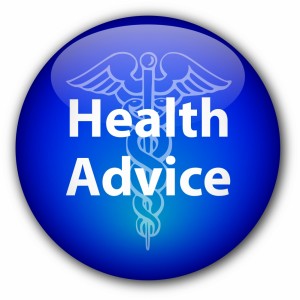
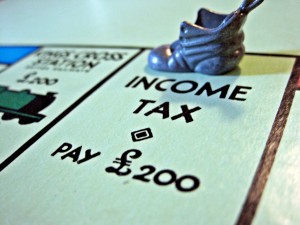


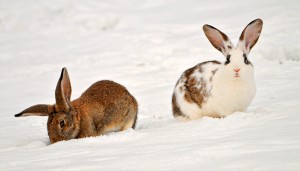
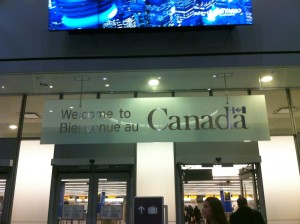



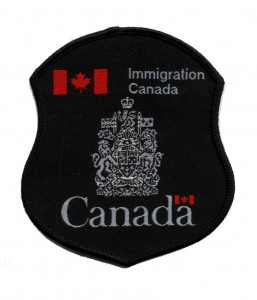
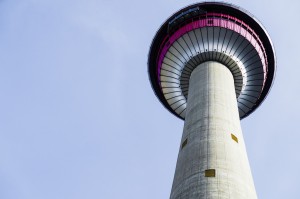

Follow Us!